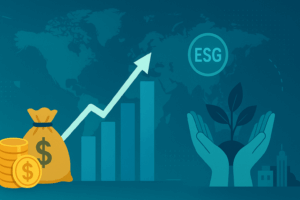Executive Summary
As institutional investors seek both financial returns and measurable social impact, emerging economies have become fertile grounds for impact investment. However, these markets come with inherent risks—political volatility, currency fluctuations, regulatory uncertainty, and operational challenges—that can hinder capital inflows. This white paper presents a comprehensive, actionable toolkit designed to help institutional investors de-risk their impact investments in emerging economies, thereby unlocking billions in sustainable capital for development and inclusive growth.
1. Introduction
Impact investing has emerged as a powerful force in reshaping global finance. It aligns capital with measurable environmental and social outcomes alongside financial return. While developed markets offer predictability, the highest potential for transformative impact lies in emerging and frontier economies. Yet, these regions also pose significant investment barriers. For institutional investors—pension funds, sovereign wealth funds, insurance firms, and endowments—the risk-return calculus remains unfavorable without strategic interventions.
This white paper aims to fill a critical knowledge gap by offering a de-risking toolkit for institutional investors, enabling them to participate more confidently in the high-impact investment opportunities across Africa, Asia, Latin America, and beyond.
2. Understanding the Risk Landscape in Emerging Markets
2.1 Key Risks Faced by Institutional Investors
-
Political Risk: Policy changes, regime shifts, nationalization, and corruption can affect asset security and regulatory frameworks.
-
Currency Risk: High exchange rate volatility can erode returns in local-currency investments.
-
Legal and Regulatory Risk: Unpredictable or opaque legal systems can make contract enforcement difficult.
-
Operational Risk: Inadequate infrastructure, limited skilled labor, and weak financial reporting can hamper execution.
-
Liquidity Risk: Underdeveloped capital markets and limited exit options restrict investor flexibility.
3. The Business Case for De-Risking
3.1 The Trillion-Dollar Opportunity
According to the Global Impact Investing Network (GIIN), impact investing assets under management (AUM) surpassed $1.2 trillion in 2023. However, only 15–20% of this capital is directed toward emerging markets. By systematically reducing risk, institutional investors can unlock vast development finance potential, catalyzing growth in climate resilience, clean energy, agriculture, education, and healthcare.
3.2 Investor Mandates are Evolving
Many institutional investors are now mandated to align with UN Sustainable Development Goals (SDGs) and ESG (Environmental, Social, Governance) benchmarks. De-risking strategies help bridge the divide between fiduciary duty and developmental outcomes.
4. A Comprehensive Toolkit for De-Risking Impact Investments
4.1 Blended Finance Instruments
Blended finance refers to the strategic use of concessional finance to mobilize private capital.
-
First-Loss Capital: Offered by development finance institutions (DFIs) to absorb initial losses and make deals more attractive.
-
Guarantees: Partial or full guarantees (e.g., from MIGA or USAID DCA) reduce credit risk.
-
Subordinated Debt: Enhances capital structure attractiveness by prioritizing institutional investor claims.
-
Technical Assistance Facilities: Improve operational efficiency and ESG compliance of investee companies.
4.2 Risk-Sharing Partnerships
-
Development Finance Institutions (DFIs): Organizations like IFC, AfDB, and Proparco offer co-investment opportunities and absorb higher risk tranches.
-
Multilateral Development Banks (MDBs): MDBs often provide political risk insurance, project guarantees, and liquidity support.
-
Local Financial Institutions: Joint ventures or co-lending agreements with regional banks can improve due diligence and mitigate cultural/legal asymmetries.
4.3 Innovative Insurance Mechanisms
-
Political Risk Insurance (PRI): Offered by MIGA, OPIC, and Lloyd’s of London to cover expropriation, war, and currency inconvertibility.
-
Weather and Crop Insurance: Protects against climate-related risks in agriculture and renewable energy sectors.
-
Credit Insurance: Protects against default on debt instruments, especially useful in infrastructure and SME financing.
4.4 Structured Investment Vehicles
-
Impact Bonds (Social/Development): Link returns to development outcomes, often with donor backing.
-
Green/Climate Funds: Pooled investment vehicles targeting clean energy, sustainable agriculture, and low-carbon transition projects.
-
Special Purpose Vehicles (SPVs): Isolate specific risks and streamline asset management in complex projects.
5. Risk Mitigation Through Due Diligence and Data
5.1 ESG-Integrated Due Diligence
Standardizing ESG data collection and incorporating materiality assessments is crucial. Tools like SASB and GRI guidelines can structure evaluations of environmental and social externalities.
5.2 Technology-Driven Risk Management
-
AI and Satellite Data: Monitor environmental risks, crop cycles, and infrastructure development in real-time.
-
Blockchain: Improve transparency, traceability, and contractual enforcement in supply chains and project finance.
6. Case Studies: De-Risking in Action
6.1 Off-Grid Solar in East Africa
A consortium including the World Bank and local DFIs invested in off-grid solar firms using blended finance and first-loss capital. Result: Over 30% internal rate of return (IRR) with significant rural electrification.
6.2 Healthcare REIT in India
A healthcare-focused Real Estate Investment Trust (REIT), backed by a political risk guarantee, attracted global pension funds. Over 100 hospitals financed with an annualized return of 12%, while improving access to care for over 2 million people.
6.3 Agribusiness in West Africa
A private equity fund co-invested with AfDB in a cashew processing company. Risk was shared via a partial credit guarantee. This model enabled inclusive sourcing from over 5,000 smallholder farmers.
7. Policy and Regulatory Enablers
-
Public-Private Dialogue: Ongoing engagement with host country regulators improves policy stability and transparency.
-
Local Currency Hedging Facilities: Reduce forex exposure via tools like TCX and regional currency swaps.
-
Capital Market Development: Encouraging the growth of impact-focused stock exchanges (e.g., Nairobi Securities Exchange’s Ibuka program) broadens exit options.
8. Roadmap for Institutional Investors
| Step | Action |
|---|---|
| 1. | Conduct ESG and SDG-aligned portfolio gap analysis. |
| 2. | Identify suitable blended finance instruments and partners. |
| 3. | Establish risk-sharing MOUs with DFIs or MDBs. |
| 4. | Use tech platforms for monitoring and evaluation. |
| 5. | Engage in policy advocacy for long-term stability. |
9. Conclusion
De-risking is not about eliminating risk—it’s about managing it wisely. Institutional investors that adopt a systematic, toolkit-based approach to impact investing in emerging economies stand to achieve outsized returns—both financial and social. With trillions of dollars sitting on the sidelines, the time to act is now. By embracing blended finance, strategic partnerships, and innovative risk transfer mechanisms, investors can redefine the frontier of sustainable investment.
Appendices
A. List of Major DFIs and Risk Mitigation Services
B. Impact Metrics Framework
-
Social: Jobs created, people served, social inclusion
-
Environmental: CO2 reduced, renewable capacity added
-
Governance: Transparency index, board diversity




